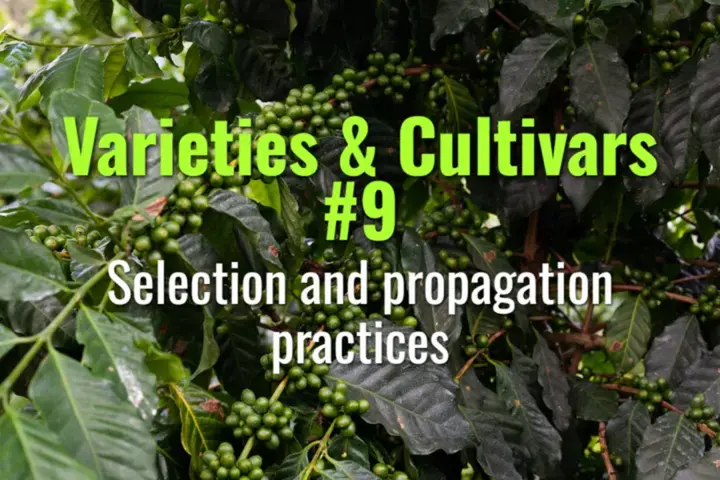Selection and propagation practices
This topic explains how coffee varieties are selected and propagated, the methods used to maintain genetic integrity, and the role of nurseries and farmers in ensuring healthy plantations.
- Coffee Basics Nerds
- 2 min read
Article 9 of 12 in Varieties & Cultivars/

Selection of Varieties
- Criteria: Farmers and breeders select varieties based on yield, cup quality, disease resistance, altitude suitability, and climate resilience.
- Heritage vs hybrids:
- Heritage types (Typica, Bourbon) valued for quality but vulnerable.
- Hybrids (Castillo, Catuaí, F1s) chosen for resilience and productivity.
- Local adaptation: Selection often reflects regional climates, soils, and market demands.
Propagation Methods
1. Seed Propagation
- Traditional approach: Most common, especially for Arabica.
- Advantages: Simple, inexpensive, allows genetic diversity.
- Limitations: Offspring may vary (segregation in hybrids); requires careful seed selection.
- Seed source: Only ripe, healthy cherries from true-to-type mother plants are used.
2. Vegetative Propagation
- Cuttings and clonal propagation: Produces genetically identical plants.
- Advantages: Preserves specific traits (disease resistance, cup quality).
- Limitations: Labor-intensive, costly, requires controlled environments.
3. Grafting
- Practice: Scion from desired variety grafted onto robust rootstock (often Robusta or disease-resistant hybrids).
- Benefits: Combines desired cup quality with root resistance and vigor.
- Use: Increasingly applied in regions facing root diseases or soil fatigue.
4. Tissue Culture / Micropropagation
- High-tech approach: Laboratory multiplication of elite plants.
- Advantages: Scalable, uniform, disease-free seedlings.
- Limitations: Expensive, requires advanced infrastructure.
Nursery Practices
- Seeds germinated in shaded seedbeds, later transplanted to polybags.
- Seedlings hardened before field planting.
- Proper spacing, watering, and pest control critical for healthy starts.
Ensuring Genetic Integrity
- Isolation: Prevents cross-pollination in seed gardens.
- Certification: Seed and plant material from official institutes ensure purity.
- Monitoring: Farmers advised to renew plantations every 20–30 years with fresh material.
Lasting Importance
Selection and propagation practices determine the long-term sustainability, resilience, and cup quality of coffee farms. Choosing the right variety and propagation method is crucial for farmers to adapt to climate change, disease threats, and shifting market demands.